- Author: Kathy Keatley Garvey
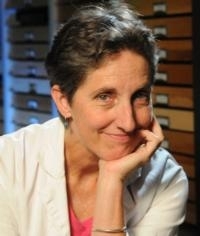
The schedule:
Saturday, Jan. 20:
"Social Wasps," 1 to 4 p.m., featuring UC Davis distinguished professor Lynn Kimsey, director of the Bohart Museum. She recently received the 2023 Exceptional Faculty Award from the College of Agricultural and Environmental Sciences. Kimsey, a recognized authority on insect biodiversity, systematics and biogeography of parasitic wasps, urban entomology, civil forensic entomology, and arthropod-related industrial hygiene, is a 34-year member of the UC Davis entomology faculty. She has directed the Bohart Museum since 1990. She plans to retire in 2024. (See news story)
Saturday, Feb. 10:
13th Annual Biodiversity Museum Day, all day. Last year 13 UC Davis museums or collections participated: Arboretum and Public Garden, Bohart Museum of Entomology, Botanical Conservatory. California Raptor Center. Center for Plant Diversity, Department of Anthropology Museum, Marine Invertebrate Collection, Museum of Wildlife and Fish Biology, Nematode Collection, Department of Earth and Planetary Sciences Paleontology Collection, and Phaff Yeast Culture Collection.
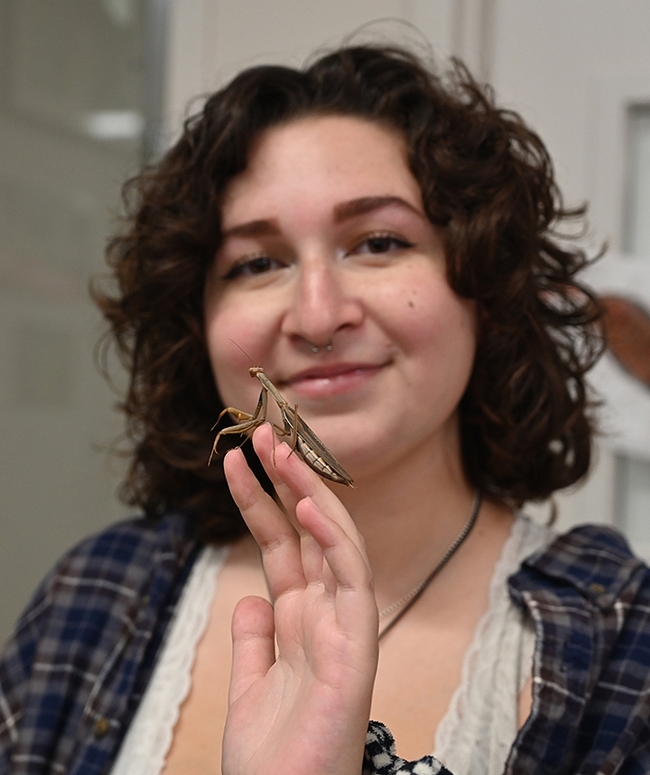
"Grasshoppers, Crickets and Katydids." Talk and a question-and-answer forum from 1 to 2 p.m. Open museum, 2 to 4 p.m. Heading the event is UC Davis undergraduate student Sol Wantz, a senior majoring in entomology and a member o the lab of community ecologist and professor Neal Williams. She serve as president of the UC Davis Entomology Club.
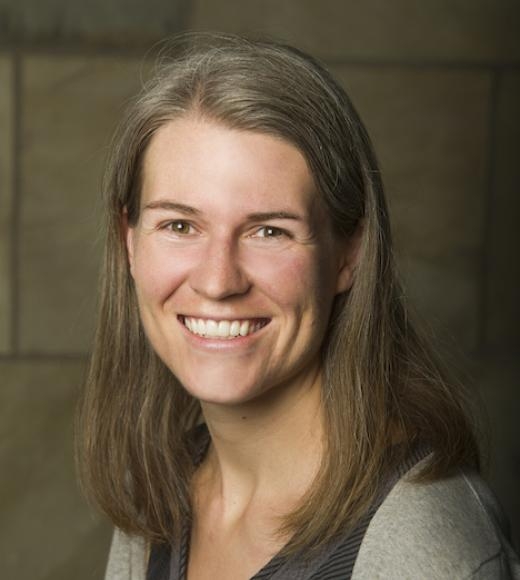
110th UC Davis Picnic Day, all day. This is billed as the largest student-run event in the country. It is UC Davis' annual open house with hundreds of free and family friendly events. Entomology displays, exhibits and activities planned by the Department of Entomology and Nematology will be at the Bohart Museum and at Briggs Hall.
Sunday, May 19:
"Bees: Both Wild and Managed," 1 to 4 p.m. Presenters will include community ecologist Rachel Vannette, associate professor and vice chair of the UC Davis Department of Entomology and Nematology.
The Bohart Museum, founded in 1946, is located in Room 1124 of the Academic Surge Building, 455 Crocker Lane, UC Davis campus. It houses a global collection of eight million insect specimens, plus a live petting zoo (including Madagascar hissing cockroaches, stick insects, and tarantulas) and a insect-themed gift shop, stocked with t-shirts, hoodies, jewelry, books, posters, pens, and more.
The Bohart Museum is open to the public Monday through Thursday. Casual walk-in hours are from 9 a.m. to noon and from 1 to 5 p.m. Pre-arranged tours (schools, scouts, UC classes) may also occur during these times. The museum will be closed for the winter holiday break, Dec. 23-Jan. 1. More information is on the website or by contacting bmuseum@ucdavis.edu. Tabatha Yang serves as the education and outreach coordinator, and Brennen Dyer as the collections manager.
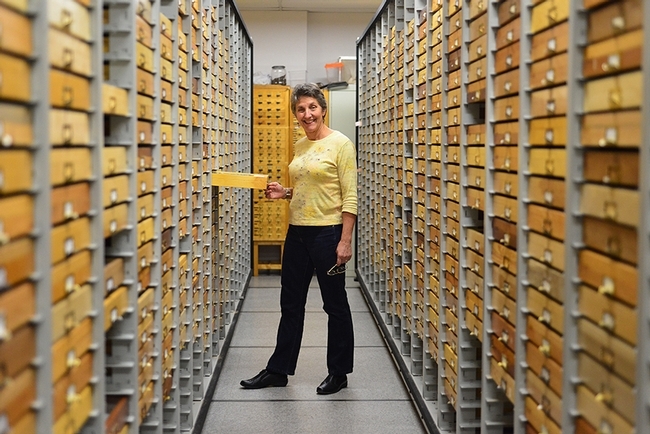
- Author: Kathy Keatley Garvey
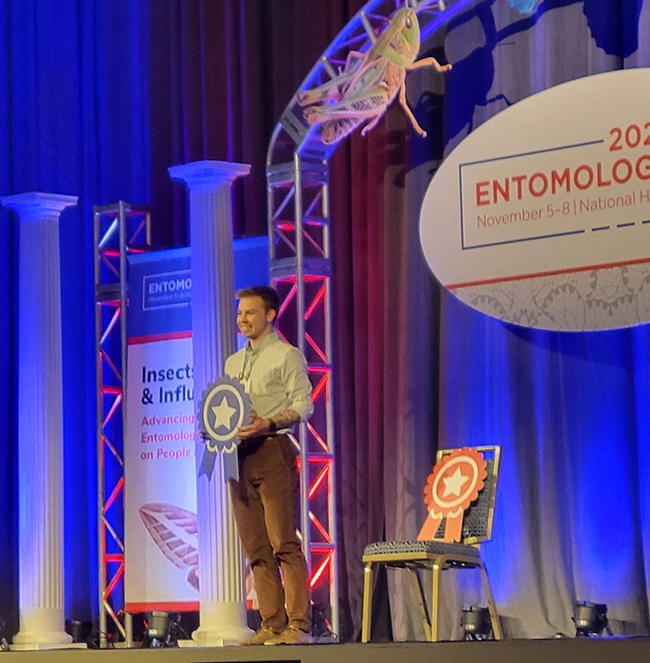
The top honors went to:
- Doctoral candidate Shawn Christensen and doctoral student Alexia "Lexie" Martin, both of the lab of associate professor and community ecologist Rachel Vannette, vice chair of the department; and
- Doctoral student Iris Quayle of the lab of professor and arachnologist Jason Bond, the Evert and Marion Schlinger Endowed Chair and associate dean, College of Agricultural and Environmental Sciences.
Christensen competed in the Plant-Insect Ecosystems (P-IE) Section, Apiculture; Martin in the P-IE Section, Pollinator Biology; and Quayle in the Systematics, Evolution, and Biodiversity (SysEB) Section, Biogeography.
Shawn Christensen. Christensen presented "Bee Specific! Solitary Bee (Anthophora bomboides) Hosts a Specialized Core Microbiome through Development."
His abstract: "Host-microbe interactions are important for the development and fitness of many macroorganisms. While social bees are dependent on a vertically transmitted gut microbiome, solitary bees, which comprise the vast majority of species diversity within bees, lack a specialized gut community. We explored the microbiome associated with the complete life cycle of the ground-nesting polylectic solitary bee Anthophora bomboides standfordiana, including bacterial and fungal composition and abundance. In contrast to expectations, we found that immature stages of this solitary bee maintain a distinct core microbiome consisting of Actinobacteria and one yeast species. Stage-specific shifts in microbial abundance and community composition occur most notably during bee diapause, during which the abundance of bacteria and fungi increased dramatically. We tested two adaptive hypotheses regarding the role of the microbiome in bee ecology. First, isolated brood cell Streptomyces strains were found to inhibit growth of multiple often pathogenic filamentous fungi, suggesting a role in pathogen protection during the long period of diapause. Second, sugar alcohol composition changed in tandem with major changes in microbial abundance suggesting links with bee metabolism or overwintering biology. Our results suggest that this Anthophora species hosts a conserved core microbiome that may provide key fitness advantages through larval development and overwintering. Much work remains to examine the nature of bee-microbiome ecology, but our study reframes the conditions thought to promote the evolution and maintenance of symbiosis."
Co-authors: Rachel Vannette and Sriram Srinivas, UC Davis; Quinn McFrederick, UC Riverside; Bryan Danworth, Cornell University; and Stephen Buchmann, University of Arizona
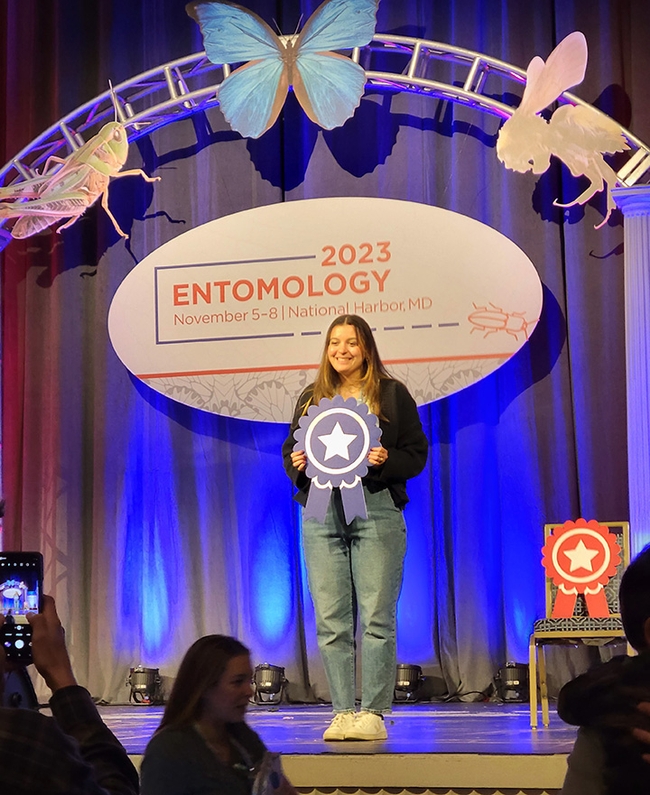
Her abstract: "Bees interact with and in some cases benefit from a diverse community of microbes, which can be obtained through intraspecific interactions or the environment. Due to differences in sociality, bee species vary in their main route of microbial acquisition and their dependence on microbes. Despite the observation that intraspecific transmission of microbes is imperfect and environmental microbes are nearly ubiquitous in flowers, the potential impacts of intraspecific versus floral microbes on overall pollinator health have not been evaluated. This study uses two model bee species - one social (Bombus impatiens) and one solitary (Osmia lignaria)--to assess the establishment and health impacts of floral and intraspecific microbes. 2x2 factorial experiments were performed on B. impatiens microcolonies and O. lignaria females to selectively introduce intraspecific microbes and/or floral microbes. Survivorship and reproduction were measured to assess bee health and fitness, and DNA extractions and amplicon sequencing were performed on bee guts to evaluate microbial establishment. The results of this study will inform how microbes from different acquisition routes establish in the host, shape the gut microbiome, and affect host health. Since many macroorganisms encounter both intraspecific and environmental microbes, this study provides a framework for similar work in other organisms."
Co-author: Rachel Vannette, UC Davis
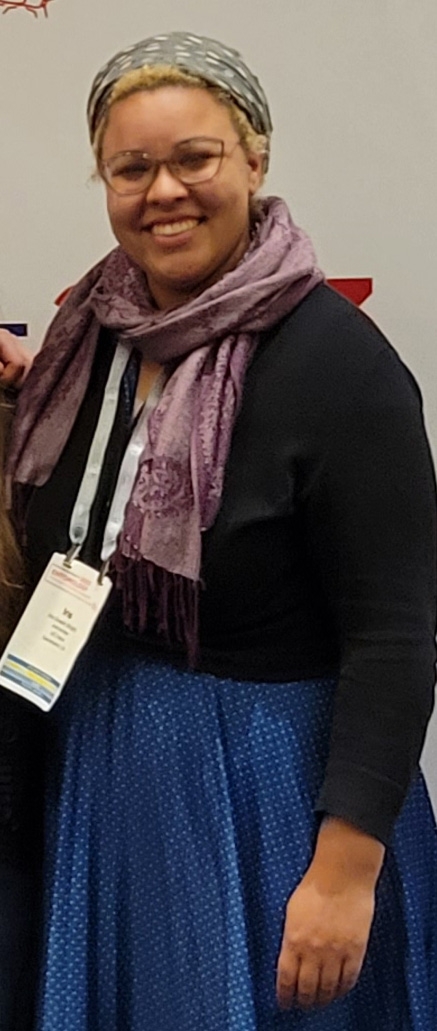
Her abstract: "In the Namib Desert, one of the largest and oldest deserts, the genus Onymacris contains a rarity for darkling beetles (Tenebrionidae) – the presence of eight species with striking ‘white' elytra (ranging from stark white to tan/striped). This study seeks to examine the phylogenetic relationships among white Onymacris species to test whether multiple derivations of white elytra is due to convergence or introgression. Population genomic data (3RAD) was generated from all white species of Onymacris with intraspecific sampling for four widespread species (O. marginipennis, O. bicolor, O. candidipennis, O. langi cornelii). Phylogenetic trees were inferred from 995 loci using concatenated and coalescent-based methods. The analyses supported two clades: langi and bicolor each of which contain species with pure white elytra. Variational autoencoder (VAE) clustering analysis shows a pattern of genetically isolated populations (bicolor) and gene flow indicating introgression (langi). These analyses also infer a potential new Angolan species sister to O. marginipennis in need of evaluation. Ancestral character state and biogeographic reconstruction resolve the timing of white species' color expression against the backdrop of sand sea emergence and increased aridity in the Namib, a landscape renown for ‘pocket speciation' and an impressive amount of darkling beetle diversity accounting for nearly 80% of the known endemic beetle fauna. Dynamic coloration provides a fascinating system through which to examine the role of ecological pressures and evolutionary mechanisms but requires a phylogenetic framework to understand organisms' potential adaptations to extreme environments, which is increasingly vital in the face of global trends aridity trends."
Co-authors: Lisa Chamberland, James Starrett and Jason Bond, UC Davis
The full list of student winners--first, second and third places--is here.
Founded in 1889, ESA is the largest entomological organization in the world. Its more than 7,000 members are affiliated with educational institutions, health agencies, private industry, and government.
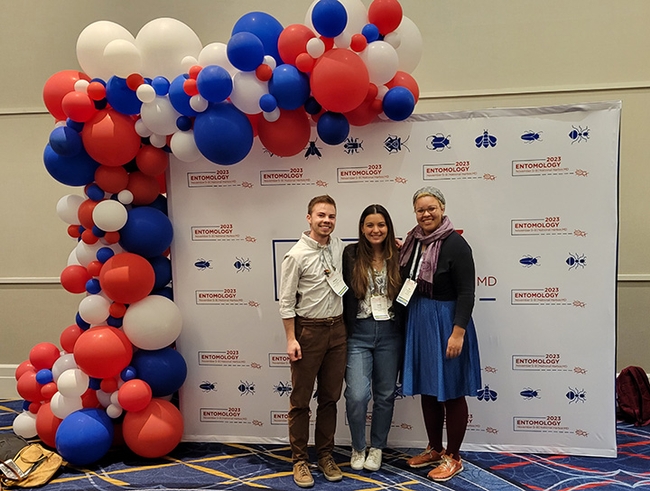
- Author: Kathy Keatley Garvey
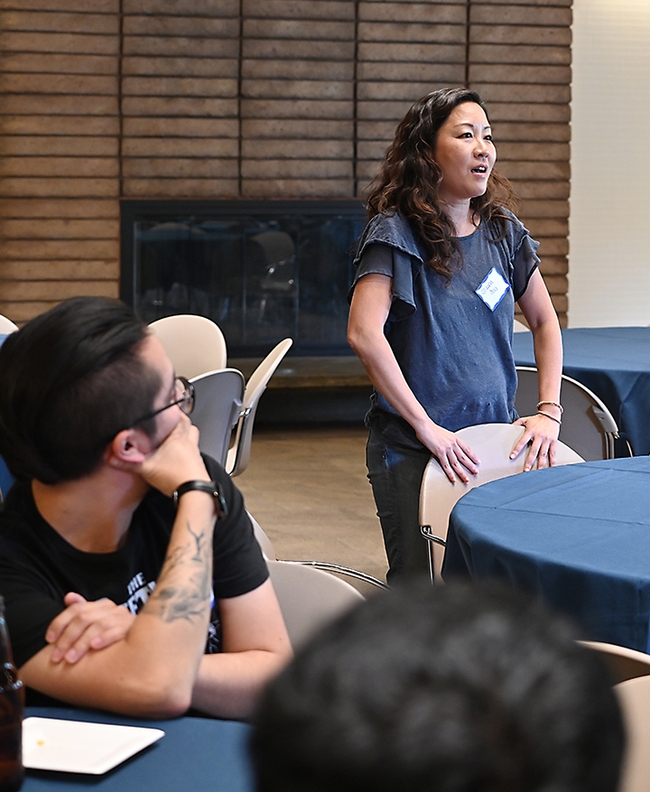
The fall social, billed as "a place to unwind and indulge," featured a light buffet and beverages.
Professor Chui, a molecular geneticist-physiologist and the outgoing vice chair, is serving a five-year term as chair, effective July 1, 2023. She succeeds nematologist and professor Steve Nadler, who had chaired the department since Jan. 1, 2016.
Chiu thanked Nadler for his exceptional service. "Steve has been an exceptional leader for our department through some very challenging times. He has been fair-minded, compassionate, and has led the department with poise and a clear vision. He has been a great mentor for me personally, and I am positive that the many lessons I have learned from him will come in very handy as I serve as chair. I am very grateful for all the support from the faculty, staff, and students in the department, and most of all, to faculty colleagues who have been stepping up to serve on key positions in department and graduate group committees during this transition. I cannot thank them enough."
Said Nadler: "I'm very pleased that we have a new group of leaders guiding the department as we move forward. I'm confident that Joanna (Chui), Rachel (Vannette) and Louie (Yang) will respond to whatever challenges are ahead."
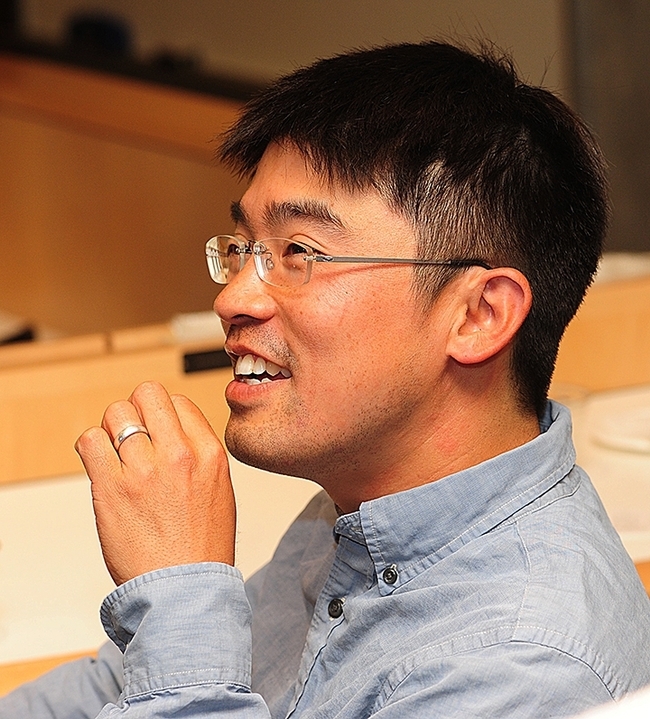
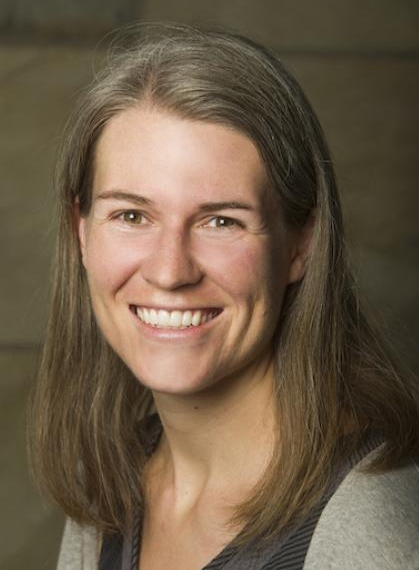
The department is ranked as one of the top entomology departments in the United States. In November 2007, the Chronicle of Higher Education ranked it No. 1 in the country. (See news story)
Chiu joined the Department of Entomology and Nematology in 2010 as an assistant professor, and advanced to associate professor and vice chair in 2016, and to professor and vice chair in 2021. She was named one of 10 UC Davis Chancellor's Fellows in 2019, a five-year honor awarded to associate professors who excel in research and teaching. The UC Davis Academic Senate honored her with a Distinguished Teaching Award, Graduate/Professional category, in 2022. She most recently received the Chancellor's Award for Excellence in Mentoring Undergraduate Research.
Chiu co-founded and co-directs (with professors Jay Rosenheim and Louie Yang) the campuswide Research Scholars Program in Insect Biology, launched in 2011 to provide undergraduates with a closely mentored research experience in biology. The program's goal is to provide academically strong and highly motivated undergraduates with a multi-year research experience that cultivates skills that will prepare them for a career in biological research.
Nadler began his five-year term as chair on Jan. 1, 2016, succeeding Michael Parrella, who accepted a position as the dean of the College of Agricultural and Life Sciences, University of Idaho, effective Feb. 1, 2016.
Nadler joined the UC Davis faculty in 1996 as an associate professor and associate nematologist, advancing to professor in 2001. He was named chair of the Department of Nematology in May 2005 and held that leadership position until June 2011. Active in the American Society of Parasitologists, Nadler served as the organization's president from 2007 to 2008. (See news story)
The two departments merged in 2011, but the department was not officially renamed the Department of Entomology and Nematology, until May 28, 2013. The department today has some 25 faculty.
The UC Davis Department of Entomology began as an offshoot of the Department of Entomology and Parasitology at UC Berkeley and the two were closely entwined for more than 50 years before the UC Davis Department of Entomology became autonomous on July 1, 1963.
UC Davis offered a two-year non-degree program in entomology, beginning in 1913. The first degree in entomology provided at UC Davis was in 1923-24 at which time Stanley B. Freeborn (for whom Freeborn Hall is named) was transferred from UC Berkeley to UC Davis to head the program.
Resources: History
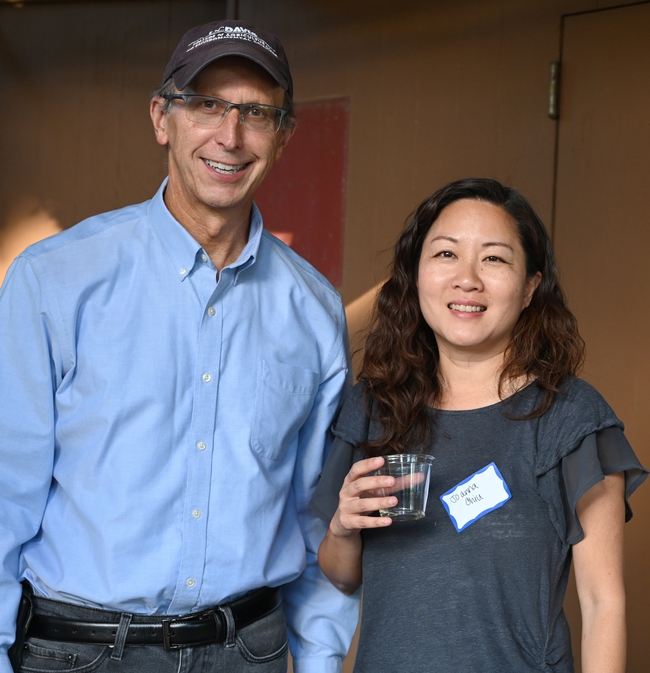
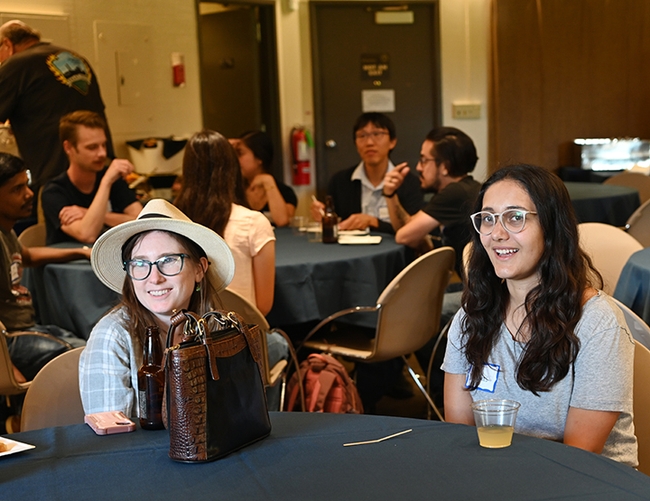
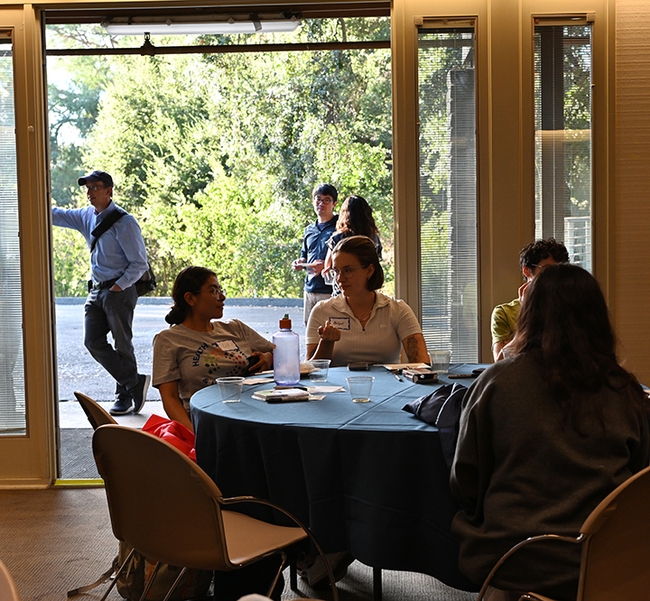
- Author: Kathy Keatley Garvey
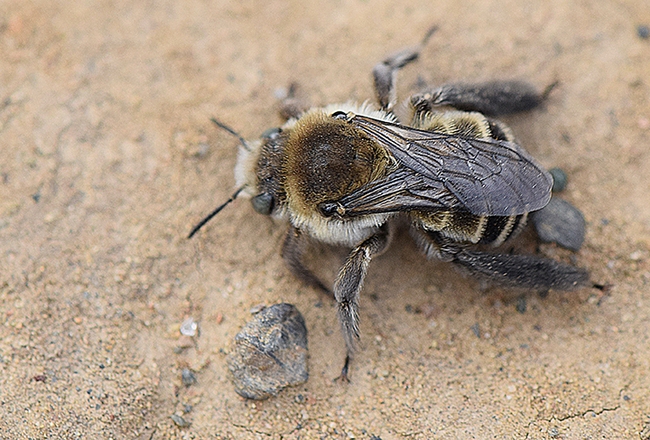
The newly released video, titled “This Fly Torpedoes a Bindweed Bee's Nest,” appears on YouTube at https://youtu.be/gJHCoP4WqMc.
“Shawn has done a lot of work on this bee and with Deep Look, and he also leads our lab's work on Anthophora bomboides, a bumble bee mimic, and studies microbial associates of pollen and solitary bees,” said community ecologist and associate professor Rachel Vannette, a Chancellor's Fellow and vice chair of the Department of Entomology and Nematology.
The Deep Look crew filmed the bees, Diadasia bituberculata, in a nesting area outside the UC Davis Stebbins Cold Canyon Reserve, near Winters.
The bees, also known as digger bees or chimney bees, are specialists on bindweed, commonly known as morning glory. “The females use pollen only from one plant species and are active through the late spring and early summer,” said Vannette, an international leader in microbial ecology who studies interactions between plants, insects and microbes.
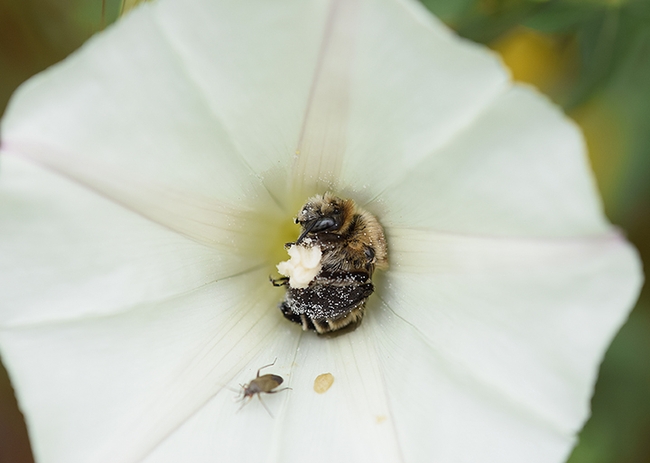
The video shows a female bee fly (family Bombyliidae) hovering over a nest entrance and dropping her eggs inside. The fly eggs hatch into larvae, which eat the bee larvae. Horizontal turrets with sideways entrances (also shown in the video) prevent the flyover egg drop.
Gabriela Quirós, coordinating producer of Deep Look and producer of this video, consulted with the UC Davis scientists, obtaining information on the location of the bee nests, as well as information on the brood cells, pollen, and turrets. The Deep Look production includes UC Davis images taken inside a bee nest.
Quirós also consulted with seven other scientists: Stephen Buchmann, University of Arizona; Andy Calderwood,Ventura County Deputy Agricultural Commissioner; Neal Evenhuis, Bishop Museum of Honolulu, Hawaii; Paul Havemann, UC Davis Natural Reserve System; Keng-Lou James Hung, University of Oklahoma; Doug Yanega, UC Riverside, and James Carey, a naturalist who researches and videos bindweed turret bees in the Santa Monica Mountains National Recreational Area.
Josh Cassidy, Deep Look lead producer and cinematographer, filmed all the footage except for the male bees fighting with each other (00;17;14- 00;25;22 in the video). James Carey, who filmed that footage, “has been regularly monitoring and filming bindweed turret bees since 2016 in Rancho Sierra Vista/Satwiwa, an open space in the Santa Monica Mountains,” Quirós said. “James also filmed the shot at 04;17-04;21 showing nests in the Santa Monica Mountains covered up at the end of the nesting season."
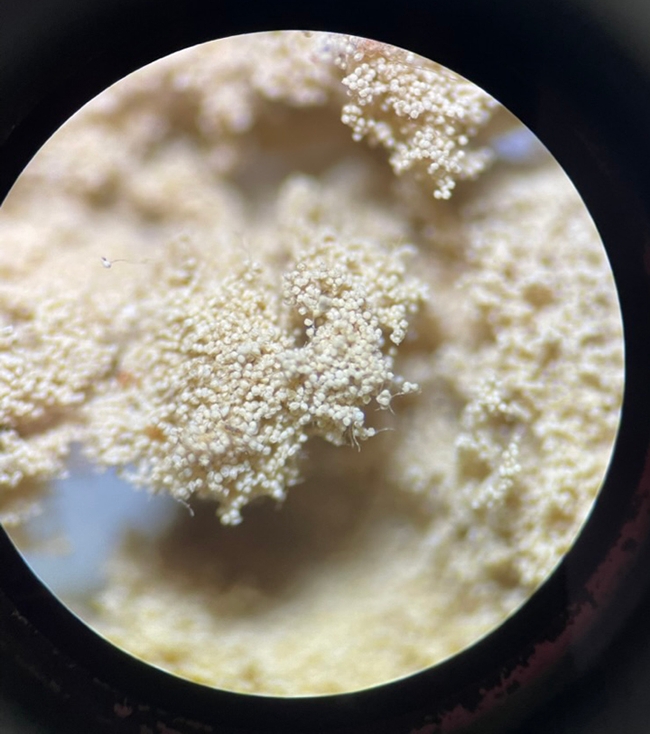
Evenhuis and Calderwood, both bee fly experts, identified the bee flies as Paravilla fulvicoma. “Neal explained the life cycle of these bee flies and advised me on the animation,” Quirós said. Deep Look editor and motion graphics expert Kia Simon created the animation of the bee fly larva eating the bee larva.
“How I got interested in producing an episode of Deep Look about bindweed turret bees was that Rachel Vannette told me about these bees in 2021,” Quirós related. “Rachel told me that Shawn Christensen, a doctoral student in her lab, was studying their pollen. Later, I saw on the Native Bees Facebook group, the videos that James Carey had recorded of bee flies dropping their eggs into the nests of bindweed turret bees in Rancho Sierra Vista/Satwiwa, in the Santa Monica Mountains. I hadn't known about bee flies until I saw his videos.”
“I became interested in trying to film a video about the interactions between bee flies and bindweed turret bees. I contacted Shawn Christensen in January of this year, and Shawn and I started checking in regularly to figure out when the bindweed bees would emerge. When they finally did come out in large numbers--they were later this year than usual--we were, luckily, ready to jump into action and film an episode.”
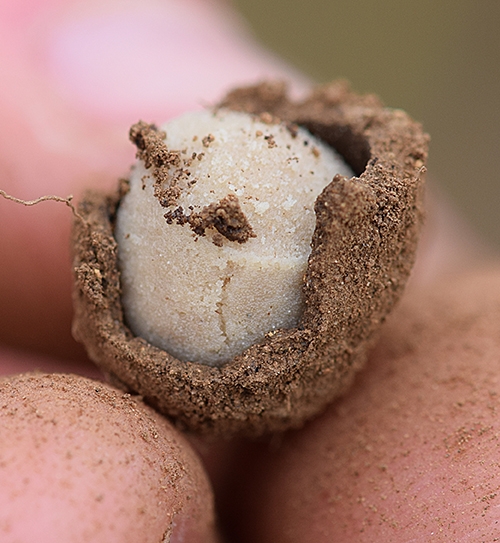
About 70 percent of the world's bee species are ground-nesting. “Females tirelessly scoop earth with their mandibles, softening it by dousing it with nectar they collected earlier,” Deep Look related. “They work side by side, but each is /queen/ of her own castle.”
More than 4,000 species of bee flies comprise the family Bombyliidae. “How do you tell a bee fly from a bee?” Deep Look asked. “Even though bee flies have hairy bodies like bees, if you look closely, you can tell them apart. Bee flies have big eyes that cover a large area of their heads. And bee flies' antennae are short compared to bees' antennae.”
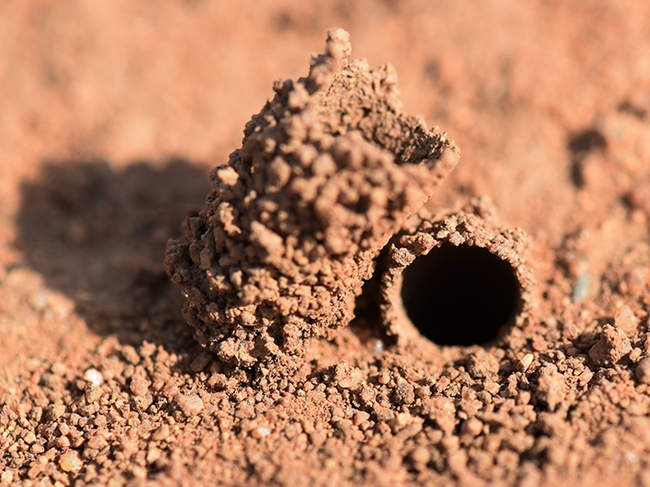
- “The camera work is nothing short of amazing. Great job!” (Cassidy's photography equipment included a 100mm and 65mm macro lenses and a probe lens, a wide angle macro lens.)
- “Love the pollen pants, and I felt so bad for the bees whose hard work was spoiled by those pesky bee flies.”
- “This channel truly deserves much more recognition than it has, the amount of information and clear footage is marvelous.”
- "Thanks. It's not often I see a good short video on a native bee species or any native pollinator for that matter."
Christensen, a member of the UC Davis Microbiology Graduate Group and anticipating his doctorate in the spring of 2024, is an evolutionary biologist turned microbiologist. Christensen also researches other native bees, including Melissodes and Colletes.
Vannette focuses her research on the chemical and microbial ecology of plant-pollinator interactions and how microbes influence plant defense and resistance against insect pests. On its website, the Vannette lab is described as "a team of entomologists, microbiologists, chemical ecologists, and community ecologists trying to understand how microbial communities affect plants and insects--sometimes other organisms, too. We often study microbial communities in flowers, on insects or in soil. We rely on natural history observations, and use techniques from chemical ecology, microbial ecology and community ecology. In some cases, we study applied problems with an immediate application including pathogen control or how to support pollinators.”
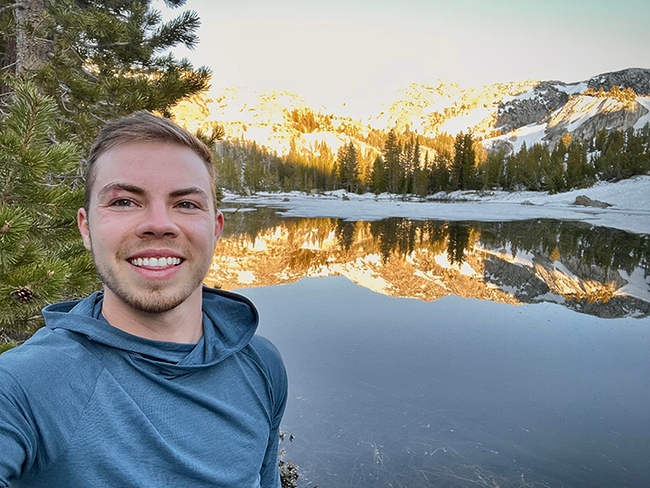
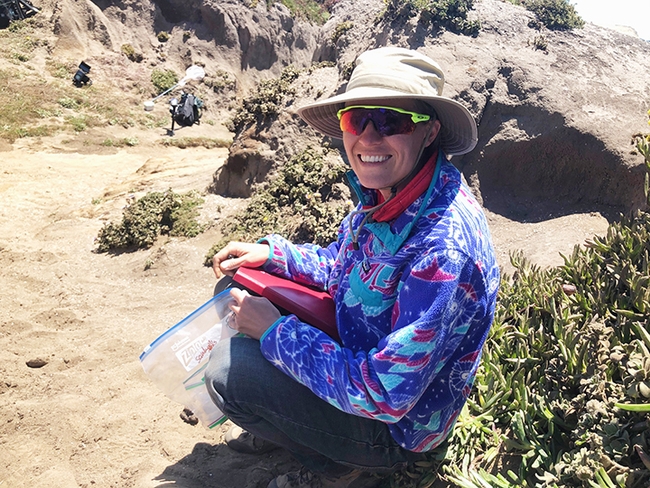
- Author: Kathy Keatley Garvey
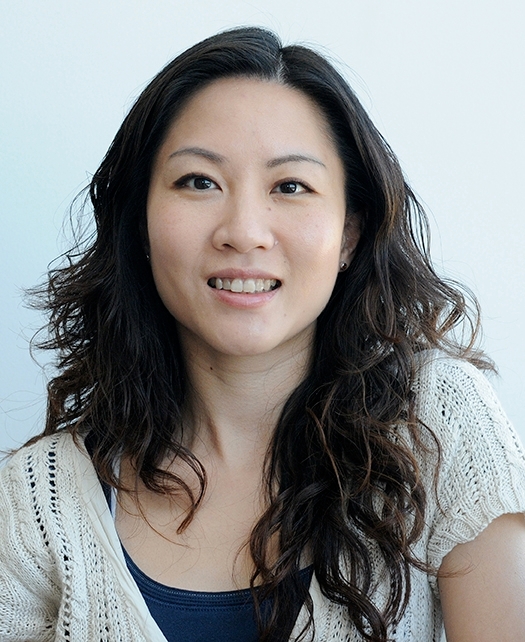
"I am pleased Joanna Chiu has been appointed as the chair of the Department of Entomology and Nematology," said Helene Dillard, dean of the UC Davis College of Agricultural and Environmental Sciences. "She is an outstanding scholar and teacher with demonstrated leadership skills. I look forward to watching Professor Chiu thrive in her new role as chair and seeing the department continue to flourish.”
The new vice chair is community ecologist and associate professor Rachel Vannette, and the new Entomology Graduate Program chair, replacing Chiu, is community ecologist and professor Louie Yang.
Other women scientists who have chaired the department: Professor Diane Ullman, 2004-05, and interim chair, Lynn Kimsey, 2008-09.
Chiu joined the Department of Entomology and Nematology in 2010 as an assistant professor, and advanced to associate professor and vice chair in 2016, and to professor and vice chair in 2021. She was named one of 10 UC Davis Chancellor's Fellows in 2019, a five-year honor awarded to associate professors who excel in research and teaching. The UC Davis Academic Senate honored her with a Distinguished Teaching Award, Graduate/Professional category, in 2022. She most recently received the Chancellor's Award for Excellence in Mentoring Undergraduate Research.
Chiu co-founded and co-directs (with professors Jay Rosenheim and Louie Yang) the campuswide Research Scholars Program in Insect Biology, launched in 2011 to provide undergraduates with a closely mentored research experience in biology. The program's goal is to provide academically strong and highly motivated undergraduates with a multi-year research experience that cultivates skills that will prepare them for a career in biological research.
A native of Hong Kong and a first-generation college student, Joanna received her bachelor's degree, magna cum laude, in biology and music from Mount Holyoke College, Mass., and her doctorate in molecular genetics in 2004 from New York University, New York. She trained as a postdoctoral fellow from 2004 to 2010 in molecular chronobiology at the Center for Advanced Biotechnology and Medicine, at Rutgers, the State University of New Jersey. Her postdoctoral training was funded by an NIH F32 Ruth L. Kirschstein National Research Service Award postdoctoral fellowship and K99/R00 Pathway to Independence Award.
"I grew up not knowing any scientists,” she related. “Both my parents work in the financial industry and neither went to college. However, my dad loves the outdoors and my childhood memories includes snorkeling with my dad and siblings, hiking in the very limited outdoors in my native Hong Kong, and watching a lot of National Geographic on TV. As a result, I have always been curious about biology, especially animal behavior. I really hoped to study biology in college. My parents, on the other hand, wanted me to be a doctor."
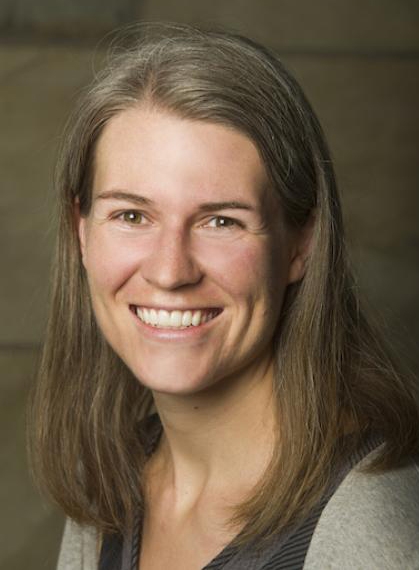
Vannette joined the UC Davis Department of Entomology and Nematology in 2015 after serving as a postdoctoral fellow at Stanford University's biology department. As a Gordon and Betty Moore Foundation Postdoctoral Fellow from 2011 to 2015, she examined the role of nectar chemistry in community assembly of yeasts and plant-pollinator interactions.

Yang, a native of Australia, but who grew up in West Virginia, received his bachelor's degree in biology from Cornell University, magna cum laude, in 1999, and a doctorate in population biology from UC Davis in 2006. He received the University of California President's Postdoctoral Fellowship to train with Professor Jonathan Levine (UCSB) and Professor Mary Power (UCB). He joined the UC Davis Department of Entomology and Nematology as an assistant professor in 2008, advanced to associate professor in June 2015, and to professor in July 2021. Yang is highly regarded for his research and mentoring. He received the 2017 Eleanor and Harry Walker Academic Advising Award, the 2018 NACADA international Outstanding Faculty Academic Advising Award, and the 2023 Distinction in Student Mentoring Award from the Pacific Branch, Entomological Society of America.
The Department of Entomology at UC Davis began as an offshoot of the Department of Entomology and Parasitology at UC Berkeley and the two were closely entwined for more than 50 years before the UC Davis Department of Entomology became autonomous on July 1, 1963. The department now has 24 faculty, plus a lecturer.
UC Davis offered a two-year non-degree program in entomology, beginning in 1913. The first degree in entomology provided at UC Davis was in 1923-24 at which time Stanley B. Freeborn (for whom Freeborn hall was named) was transferred from UC Berkeley to UC Davis to head the program. (See https://entomology.ucdavis.edu/entomology-history)
The UC Davis Department of Nematology officially joined the Department of Entomology on May 28, 2013.


